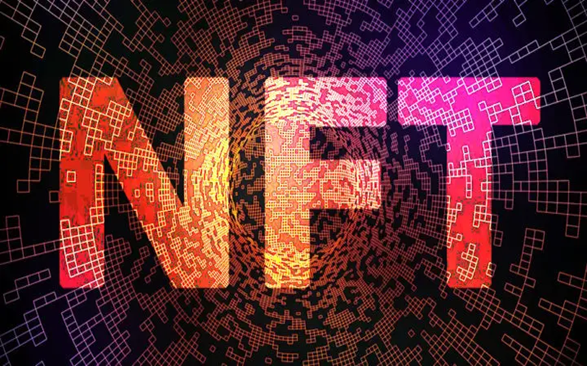The rise of non-fungible tokens (NFTs) in 2021 took the crypto industry by storm, creating a digital gold rush that saw celebrities, artists, and tech enthusiasts diving headfirst into this new frontier. This initial mainstream adoption and substantial funding made many praise NFTs as the future of digital ownership and investment.
But as the hype fades and the NFT market faces considerable instability and increasing difficulties and scrutiny, many are left wondering: are NFTs dead? Was it merely a passing trend? Is there a viable future for NFTs?
The rise and fall of NFTs
NFTs first gained widespread attention in early 2021 with high-profile sales like Beeple’s digital artwork fetching over $69 million at a Christie’s auction. This event, along with the sale of various celebrity-endorsed NFTs, spurred a wave of interest and investment in digital collectibles.
Platforms like OpenSea, Rarible, and NBA Top Shot saw unprecedented growth, and the value of NFT sales skyrocketed into the billions. Yet, like many speculative markets, NFTs faced an inevitable correction.
By mid-2022, NFT sales had dropped significantly, and stories of declining interest became common. The number of active wallets trading NFTs decreased alongside trading volume, and some prominent projects lost a substantial amount of their value. This downturn has led many to declare that the NFT bubble had burst, but does this mean that NFTs are truly dead? A 2024 NFT report by NFT Evening tries to answer this question.
96% of NFTs considered dead
According to the Report, which analyzed over 5,000 Ethereum NFTs and 5 million NFT transactions extracted from the analytics platform NFTScan, an alarming amount of NFT collections are dead or have lost relevance. The research also factored in metrics such as their floor price, market cap, and trading volume.
The study showed that only 4% of sample NFTs are still alive or relevant in the market as of September 2024 with 96% considered dead. By ‘dead’, it means that these NFT collections met any of the following criteria: zero trading volume, seven-day sales less than 20, or no activity on X (Twitter) for the last 3 months at the time of the report.
According to NFT Evening, 2023 recorded the highest number of dead NFTs, with 30.32% of collections going into extinction that year. In 2022, 21.57% of NFTs died while the yearly percentage of dead NFTs in 2021, 2020, and 2019 were 12.99%, 13.28%, and 2.13%, respectively.
Read also: A Guide to Identifying a Good NFT Marketplace
NFTs lifespan notably short.
Moreover, the Report revealed that NFTs go into extinction faster than some traditional crypto projects, reflecting their highly speculative nature and inability to maintain long-term value.
In particular, the average lifespan of an NFT is now 1.14 years, according to NFT Evening. Meanwhile, the average lifespan of traditional crypto projects is 2.83 years. In essence, the average lifespan of an NFT is 2.5 times shorter than regular cryptoassets.
96% of NFTs considered dead does not mean the death of NFT technology
The rate of the NFT market has dropped massively in terms of user activity, trading volume, and investment is a cause for concern. The situation throws questions around the authenticity and utility of NFTs. Are NFTs really valuable or are they overhyped? In fact, NFTs have been said to be associated with some cases of money laundering. This is not surprising since NFTs are commonly applied in the arts sector, where value is highly subjective.
However, pronouncing NFT technology dead may be premature. NFT as a technology is an amazing innovation. The ability to store unique digital assets on a blockchain for verifying ownership and authenticity, representing exclusive rights to digital or physical items, such as digital art, collectibles (sports cards, rare coins), virtual real estate, music and audio files, virtual event tickets, and luxury goods (designer clothing, jewelry) is undoubtedly valuable. Apart from transferability and immutability, NFT technology guarantees uniqueness of each asset and also ensures non-fungibility, meaning that it cannot be exchanged for identical assets.
Read also: Incentivizing Loyalty: Lessons from the OpenSea-Blur NFT Market Share Battle
For NFTs to thrive sustainably, the industry needs to present tangible value beyond speculation. In essence, key developments need to occur, including practical applications of NFTs such as event ticketing, intellectual property rights, and digital identity verification. NFTs are great for digital art marketplaces, gaming (in-game items, virtual assets), social media (unique content), virtual events (tickets, experiences), and intellectual property protection. These and many more real-world utilities could help provide sustainable demand for NFTs.
NFT adoption also requires regulatory certainty so the challenges of high market volatility, scalability issues, security concerns, and environmental impact (energy consumption) can be addressed.
As NFTs evolve, they’re transforming the digital landscape, enabling creators and owners to monetize unique assets and experiences.
Read also: Beyond the Hype: Improving Usability of Web3 Applications Through Good UX Design
Ndianabasi Tom A crypto journalist and content writer who has been talking about cryptocurrency and blockchain technology since 2018, Ndianabasi is a Writer at Crypto Asset Buyer (CAB).
Discover more from Crypto Asset Buyer
Subscribe to get the latest posts sent to your email.




